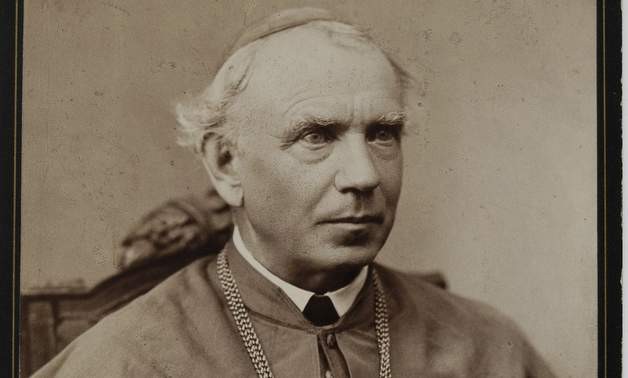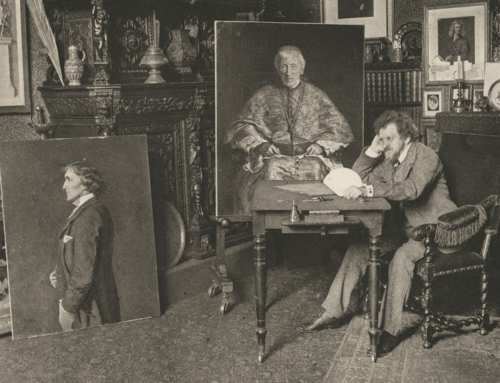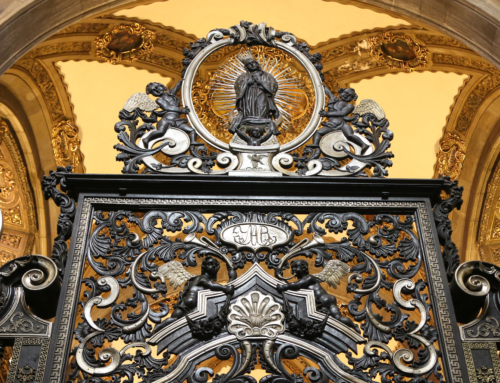Four years ago tomorrow, on October 11, 2009, in St. Peter’s Square, Pope Benedict XVI presided over the canonization of five saints, all of whom lived during the nineteenth or early twentieth century. On that day, I was 1,456 miles to the northeast in St. Petersburg, Russia, at the Church of St. Catherine of Alexandria, the first parish assignment of one of these new saints, Zygmunt Szczęsny Feliński (Sigmond Felinski, 1822–1895).
Although he is less known than some of the other new saints—being overshadowed by Damien of Moloka’i, the famous leper priest, and Jeanne Jugan, the foundress of the Little Sisters of the Poor—Felinski does join all of these modern saints in showing us how to live as holy men and women in a time of great tension and strife between the Church and the state.
Felinski was born a Catholic Pole in the Russian Empire. He received a very good education and was ordained a priest in 1855. He was appointed Archbishop of Warsaw in 1862, where he served for sixteen months before being exiled by the Russian government for twenty years to the small, mostly Orthodox city of Yaroslavl in northern Russia. Following this, he was appointed to the Titular See of Tarsus and lived in the Austrian section of Poland for the last twelve years of his life.
Felinski’s understanding of the Christian life was expressed most directly in a letter he wrote when he was twenty-one: “I am convinced that by keeping my heart uncontaminated, living in faith and in fraternal love towards my neighbor, I will not go off the path. These are my only treasures and they are priceless.” This purity and focus are lived out time and time again throughout his life in spite of great challenges.
This is demonstrated first of all through the centrality of the Eucharist in Felinski’s life. When he arrived in Warsaw as its new archbishop, the Catholic churches had been closed for four months and the cathedral profaned by soldiers. His first action was to rededicate the cathedral. Three days later he reopened all the churches with a Forty Hours Devotion and Solemn Exposition throughout the entire city. For Felinski, the Mass and the Most Holy Eucharist were essential to life, and neither political struggles nor protests by the clergy against the actions of the state should prohibit the people from receiving the sacraments.
This does not mean that Felinski was not concerned about the actions of the state. As archbishop, he protested regularly about the abuses against priests, religious, and the faithful. But he would not support any particular political program (like an independent Poland). Because of this, the archbishop lived with distrust on both sides. The Russians distrusted him because he was a Catholic who fought strenuously to remove the government from interfering in the internal affairs of the Church. The Poles and even some of the clergy distrusted him because he refused to get involved in political affairs; he was even seen by some as a government agent for not supporting the Polish people against the Russians.
Felinsiki was not fighting a political battle, but he was fighting for Christ and never tired of doing so, no matter what his position. Before becoming archbishop, he founded a congregation of Franciscan sisters to help those in need. When exiled to Yaroslavl, he became known as the “holy Polish bishop” by the Orthodox citizens of the city, and he was able to gather funds and construct a Catholic church (a parish which is run by Dominican friars today). Later, in semi-exile outside of the Russian Empire, he labored for twelve years with a community of farmers, constructing for them a school and a church.
This saint whom I first encountered and celebrated that October day reminds us to always remain focused on Christ, no matter what situation we find ourselves in. The best way to do this is through the greatest treasure we can possibly have on this earth: the Holy Eucharist. As Felinski demonstrated by his entire life, when we labor for Christ, we may not be successful as the world defines it, but we will bear fruit, fruit that will last.
St. Sigmond Felinski, pray for us.
✠
Image: St. Sigmond Felinski







